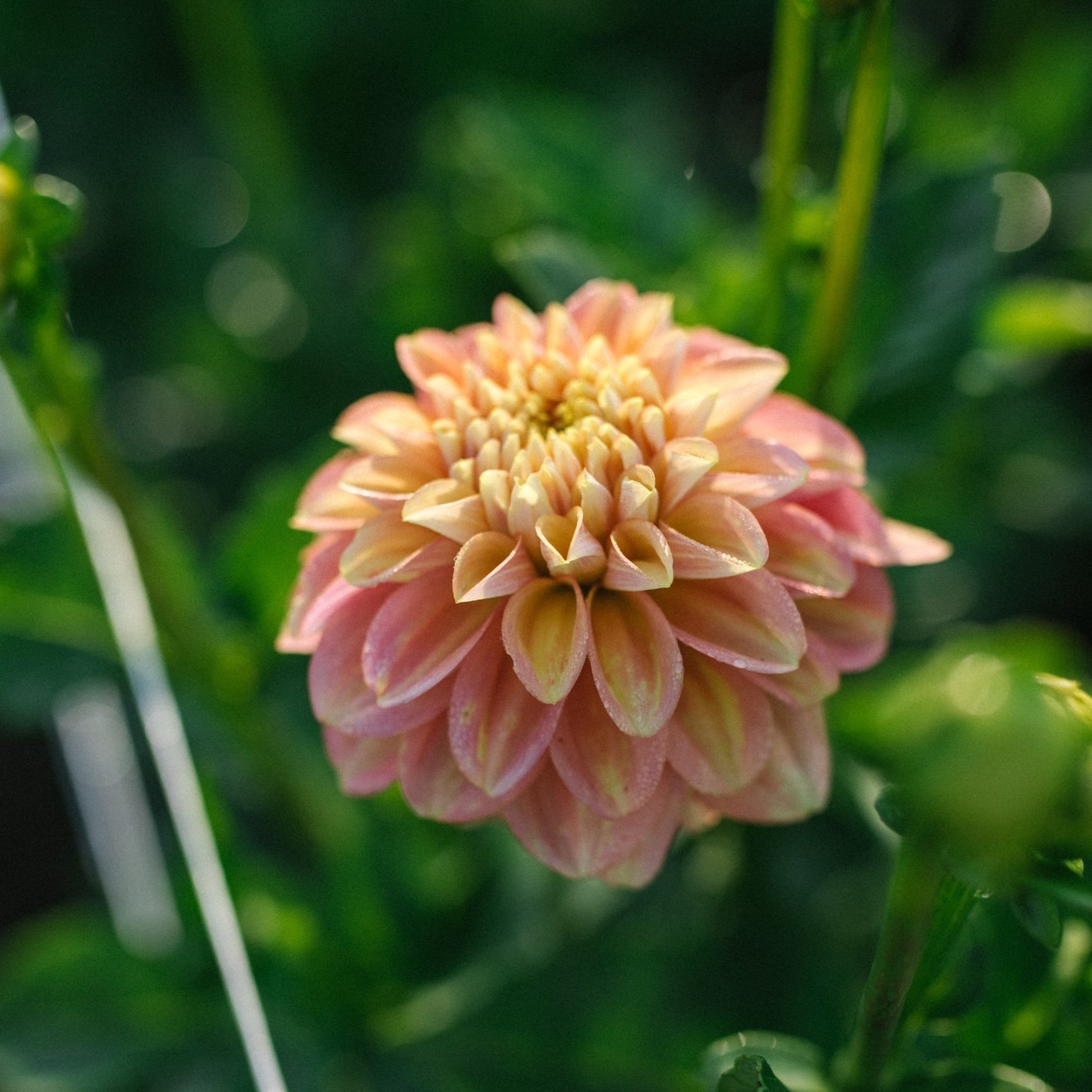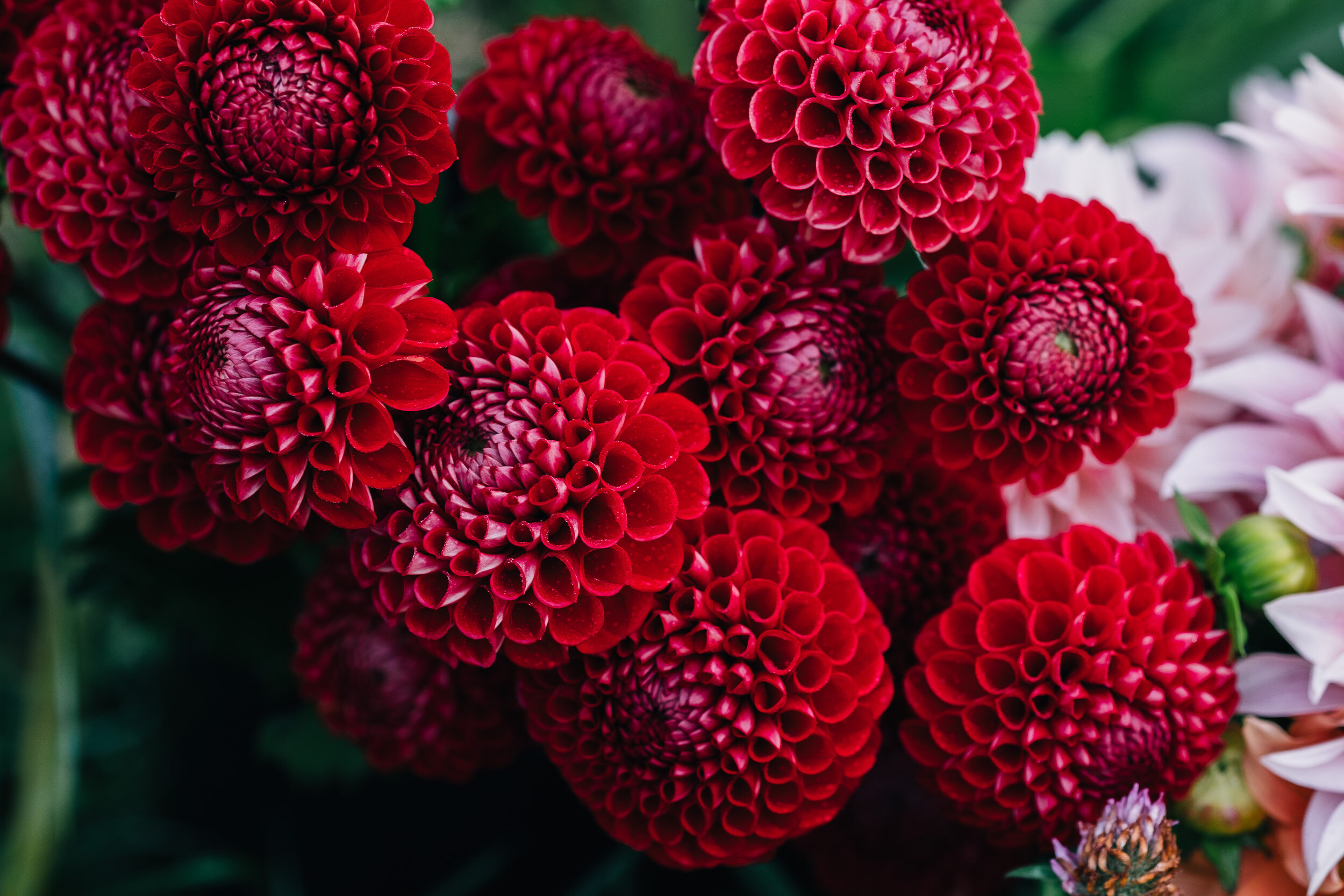
Dahlia Growing Guide & FAQs
Our certified organic dahlia tubers are now on sale! All tubers will ship in April, 2024. Please find our dahlia growing guide and dahlia FAQs below.



Dahlia Growing Guide
Wait to plant out into your garden until after all danger of frost has passed. Frost dates can be found for your zip code on the Farmers’ Almanac website, but monitoring your local ten day forecast will provide the most accurate information on temperatures!
Amend your soil as necessary with compost and fertilizer. Dahlias thrive in loose, well drained soil with full sun exposure.
Plant 6” deep - place horizontally in the soil with the eye facing up. Make sure plants are at least 12” apart.
Water only when you see signs of sprouting. Watering too early can lead to tuber rot (though a little rain is ok!). Once sprouts have appeared, water deeply 2-3 times per week, depending on the weather.
Pinch with pruners above the 3rd or 4th leaf set when the plant is 8”- 12” tall. This will lead to branching, more stability for the plant, and more blooms!
Stake or trellis the plant for support if you notice them tipping under the weight of the blooms.
Harvest the blooms when the flower is 3/4 open and place immediately in water. Dahlias last longest when they are harvested in the cool, early morning hours. Some say a quick dip in boiling water upon cutting can help their vase life, and flower food will help as well.



Dahlia FAQs
What is a dahlia tuber?
A dahlia tuber is the tuberous root of a dahlia plant. It is planted in place of a seed (like a flower bulb). These roots provide water and nutrients to the plant, and as the foliage grows above ground, the tubers (or roots) below the ground grow and multiply. If you dig the tubers up at the end of the season you will have more to plant next year!
How many tubers will I receive?
We sell single tubers (not the whole clump!) or in lots of 3, 5, or 10. We spend many hours dividing & sorting our tubers over the winter months to have the ready for shipping in the spring! Each of your tubers will come with an eye, and will grow into a large plant that produces many blooms.
Are dahlias annuals or perennials?
They can survive through the winter in mild climates, but in cold climates (like Maine) the tubers must be dug up at the end of the growing season, otherwise they will freeze as the ground freezes - though they can withstand a light frost or two.
What is an “eye”?
An eye is the growth point on the tuber. It is visible on the stem near the “neck” of the plant and looks just like a small bump or an eye. Once the weather starts to warm and the tuber "wakes up” it will send a sprout up through the eye. All of the tubers we sell will have an eye.
How do I save and store my tubers?
Dig your tubers after one or two frosts in the fall. Everyone has a different approach, but we find that digging them, brushing off as much soil as possible, and placing the entire clump into pine shavings in a cardboard box works well. Tubers should be stored in a basement or cool environment - temperatures between 40* - 50* F are ideal, but below freezing will lead to rot. Check your tubers frequently throughout the winter months! Some shriveling is ok, but you’re aiming for the tubers to be firm to the touch.
How do I divide my tubers?
Use your intuition! Brush as much dirt off the clump as possible - you can even rinse them off with a hose for a cleaner work environment. Discard any root material that is stringy or looks like it has broken and frayed. Search for “eyes” on the neck of the tuber that are clearly connected to a long, firm root - use sharp clippers or a sharp knife to cut around the eye, being careful not to break the neck. If you rinsed them before dividing, leave them in the sun to dry before putting them back in storage to prevent rotting and mold.






